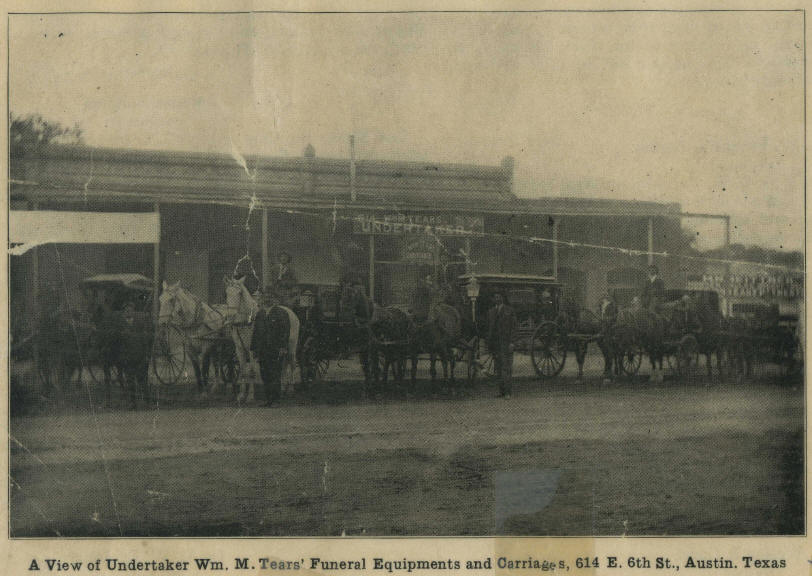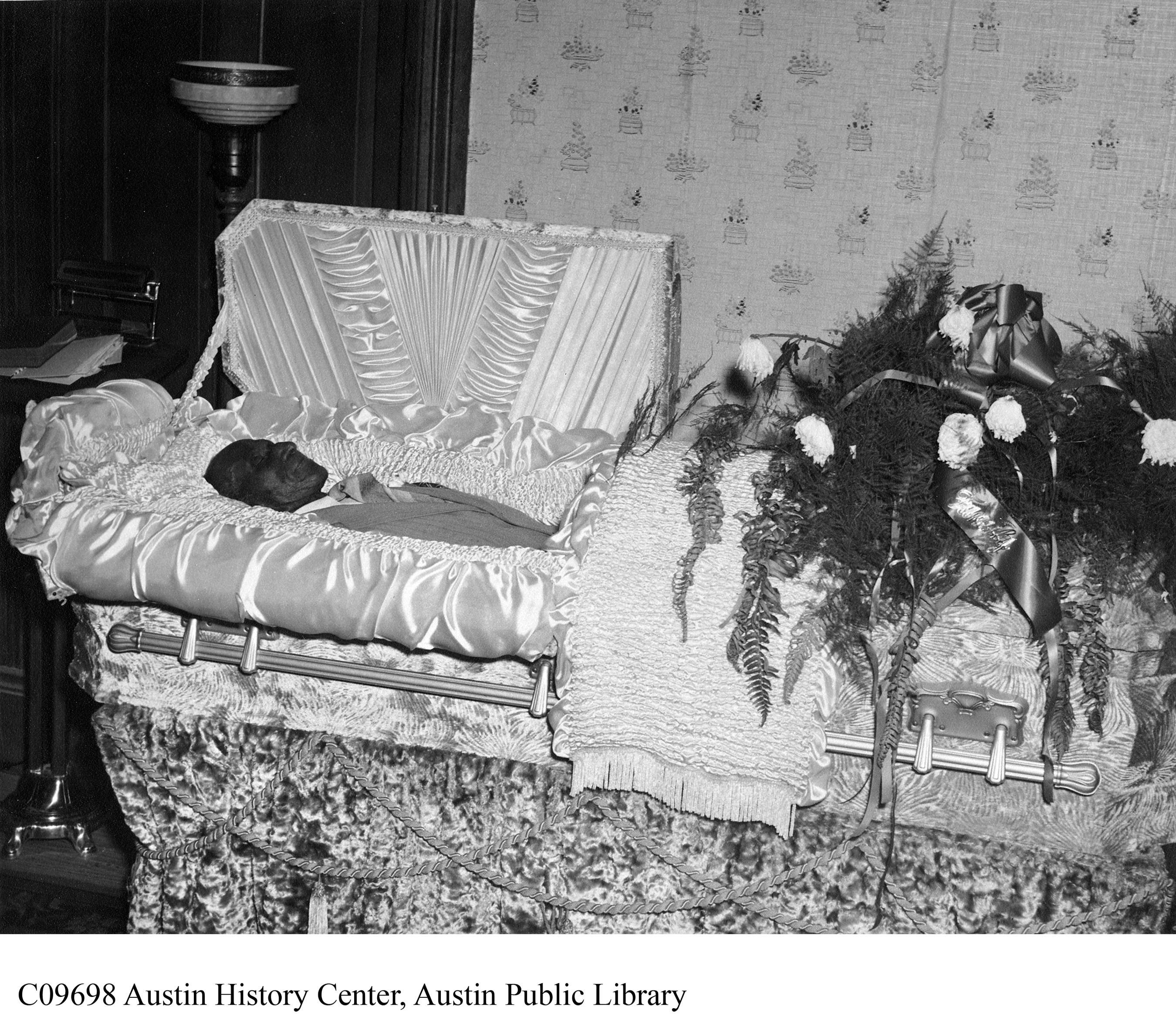
Historical Context
|
“When the century began, many communities in the United States had no Black funeral homes.”[1] Prior to this, “Black families who wanted their deceased relatives embalmed were forced to use back doors and basement entrances of White mortuaries. Even in death, the color line was a persistent—albeit ambiguous—line of demarcation.”[2]
|
|
Ada Simond recalls Jim Crow days in Austin: “You’d go across the street to a drug store and maybe you wanted to go in to get a cup of coffee or something, but you couldn’t do it because you were Black. They would just tell you, ‘We don’t serve colored.’ Or you’d go to a store and they’d say, ‘You can’t try this on; Black people can’t try things like that on.’”[3] |
|
The earliest African American mortuary was started by a Black man who had worked for a White undertaker. William Tears prepared the Black bodies for Thurlow B. Weed. [4] Mr. Tears opened his own mortuary in 1900 or 1901. |
 |
This is a photograph of the original Tears location on East Sixth Street. |
| From the collection of Marjon Christopher, King-Tears.
|
|
“White funeral directors would not serve them, and African Americans would not necessarily trust White funeral directors. African Americans funeral directors would understand how to do African American hair and makeup, understand the religious norms of the African American community, and know what was proper in the community.”[5]
“The cultural importance attached to an open-casket viewing required of morticians a particular skill with, and attention to, the appearance of the deceased.”[6] |
 |
| Unidentified image from the Austin History Center |
|
“As the twentieth century began, the Black undertaker emerged as a businessman in a community of few independent Black-owned businesses. Sometimes, he was the only one, other than the preacher, who wore a suit during the week…. Indeed, the ‘24/7’ suit and the authority it brought were not insignificant considerations in the decisions of some young men to go into ‘the business.’ It was an important sign of status, and although the income may have sometimes been paltry, the look was always prosperous.”[7]
Ebony Magazine in 1953 declared undertakers “the most influential men in Negro society.”[8]
“So, when Black men embraced the burial business, they were responding not only to a business opportunity but also to a sense of cultural responsibility and community necessity. Black families knew Black morticians—they were our kin, our neighbors, our fellow congregants in Sunday worship services.”[9]
|
Home Historical Context Tears History Fuller History Black Cemeteries
[1] Holloway, K.F.C. (2003). Passed on: African American mourning stories. Durham: Duke University Press, p.15.
[2] Ibid, p.16.
[3] Grimes, A. (1989). “Reminiscing: Ada DeBlanc Simond.” Austin Magazine. Austin, Tex., v.31, #4 (April), p. 44.
[4] King, J.T.Q. (1995+?). The History of King-Tears Mortuary, Inc. [From the personal papers of Marjon Christopher, V.P., King-Tears.]
[5] Rosenblatt, P.C. and Wallace, B.R. (2005). African American grief. New York: Routledge, p.47.
[6] Holloway, K.F.C. (2003). Passed on: African American mourning stories. Durham: Duke University Press, p.26.
[7] Ibid, p.23.
[8] Ibid, p.24.
[9] Ibid, p.16.